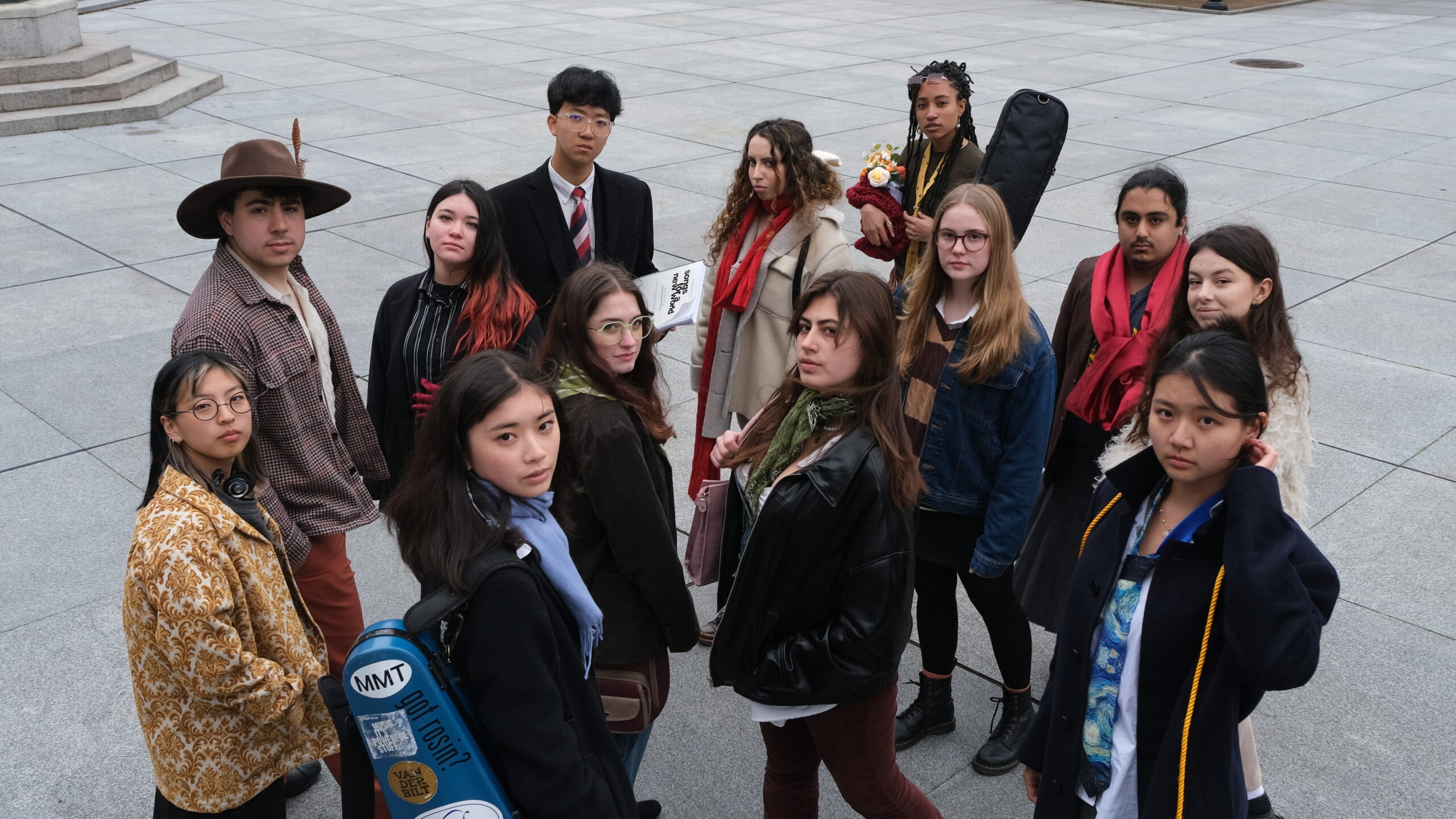“Songs for a New World” emboldens viewers to chase after bright, unknown futures
Viewers can watch Yale’s adaptation of the award-winning musical, written by Jason Robert Brown, from April 10 to 12 at the Saybrook Underbrook.

Courtesy of Alice Cui
Jason Robert Brown’s emotional whirlwind musical, “Songs for a New World” will be performed April 10 to 12 in the Saybrook Underbrook.
This concert-style rendition of “Songs for a New World” explores the emotional nuances of the human experience through vignettes centered around characters facing a complex decision. Characters range from soulful ship captains to teenage basketball players. The introspective power of theater is demonstrated by the specificity of the characters, the complexity of their relationships and the audience’s ability to empathize with them.
“A message that all the characters learn by the end, especially as they go through their often scary decisions, is this concept of ‘we’re going to get through it,’” said actor Leo Rael ’28. “No matter what you’re facing, you can keep going with the help of your loved ones and the people around you.”
Since November 2024, the cast and crew have been working diligently to bring to life the high-stakes, musical scenes of “Songs for a New World.” Every number is a climactic moment in the life of the on-stage protagonist.
While the storylines of the musical numbers are different, director Rena Kawasaki ’27 was intentional in pursuing a cohesive storytelling method. When a character is not singing, they either sit on the stairs or in the aisle. The goal is for the audience to feel as if they’re “watching a story being told around a campfire,” said Kawasaki.
Featuring distinct settings and nuanced relationships, the cast of four actors have the daunting task of developing complex characters within the five-minute life of a song.
“Wherever you start the song is a different place than where you end it,” said actor Hannah Kurczeski ’26. “Figuring out the journey for each character is really exciting.”
However, the actors are not alone in their pursuit of verisimilitude. On an intentionally sparse stage that makes use of abstractism, the intricacies of each vignette are conveyed through technical choices. Lighting is adjusted to match tone, and costumes are changed to complement the time period.
Non-canonical methods are also employed to further immerse the audience in the story. Dancers use movement to weave the stories together, and musicians enter scenes to act as plot devices.
The highly collaborative nature of the musical has sprouted fruitful relationships between the cast and crew, said Rael. The passion and love for the show is demonstrated not only by the long hours spent working on the production, but also by the camaraderie of the team.
“She could understudy for any of the dancers in a second,” said Rael, about stage manager Amelia Shaw ’28. “It’s so awesome to see everyone so passionate about this.”
Passion is essential for a show of this nature. Featuring intense emotions and high stakes, the palpability of such abstract themes is only achieved through the actors’ passion for the material.
While the elements of the physical set are visually immersive, the music emotionally captivates the viewer. Beyond dialogue and lyrics, the melodies adapt to the tone of each story. Musical styles vary widely, encompassing the vivacity of pop and the sentimentality of gospel.
“It’s such a powerful mode of storytelling, because I think brains are quicker to make different associations with it,” said Kurczeski. “I just really believe that music moves people and is a way to connect with them emotionally and burrow into their hearts and into their minds.”
The importance of music as a storytelling device is further emphasized by the staging. The crew melded emotionally and visually immersive elements by formatting the stage to offer a 360 degree view to the audience. In addition to a multi-angle perspective, designers also decided to keep the pit orchestra on stage for the entirety of the show.
“The audience is going to see a pretty vibrant display of the orchestra and the ensemble,” said producer Alice Cui ’27.
According to Kawasaki, the production strived to make theater more accessible — to both veterans and newcomers to the stage. While some cast and crew members are pursuing theater and art academically, Kawasaki was intentional in recruiting people with passion rather than experience.
“College is a cool place to experiment with things you’ve never done before,” said Kawasaki. “I want people to watch this and not look at theater as something that is really scary but more fun.”
From the orchestra to the actors, members of the company pursued this project out of a love for theater.
Through immersive musical and visual elements, “Songs for a New World” offers audience members a glimpse into the determining moments of a person’s life.
“Songs for a New World” was Jason Robert Brown’s first musical to be performed at New York City Center.







